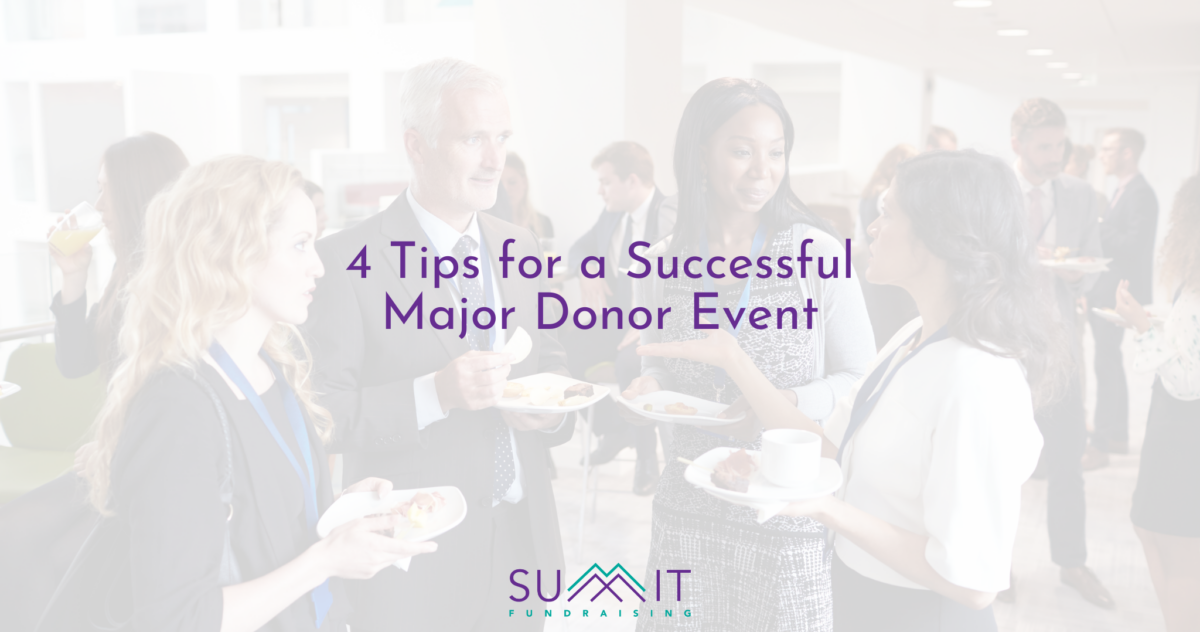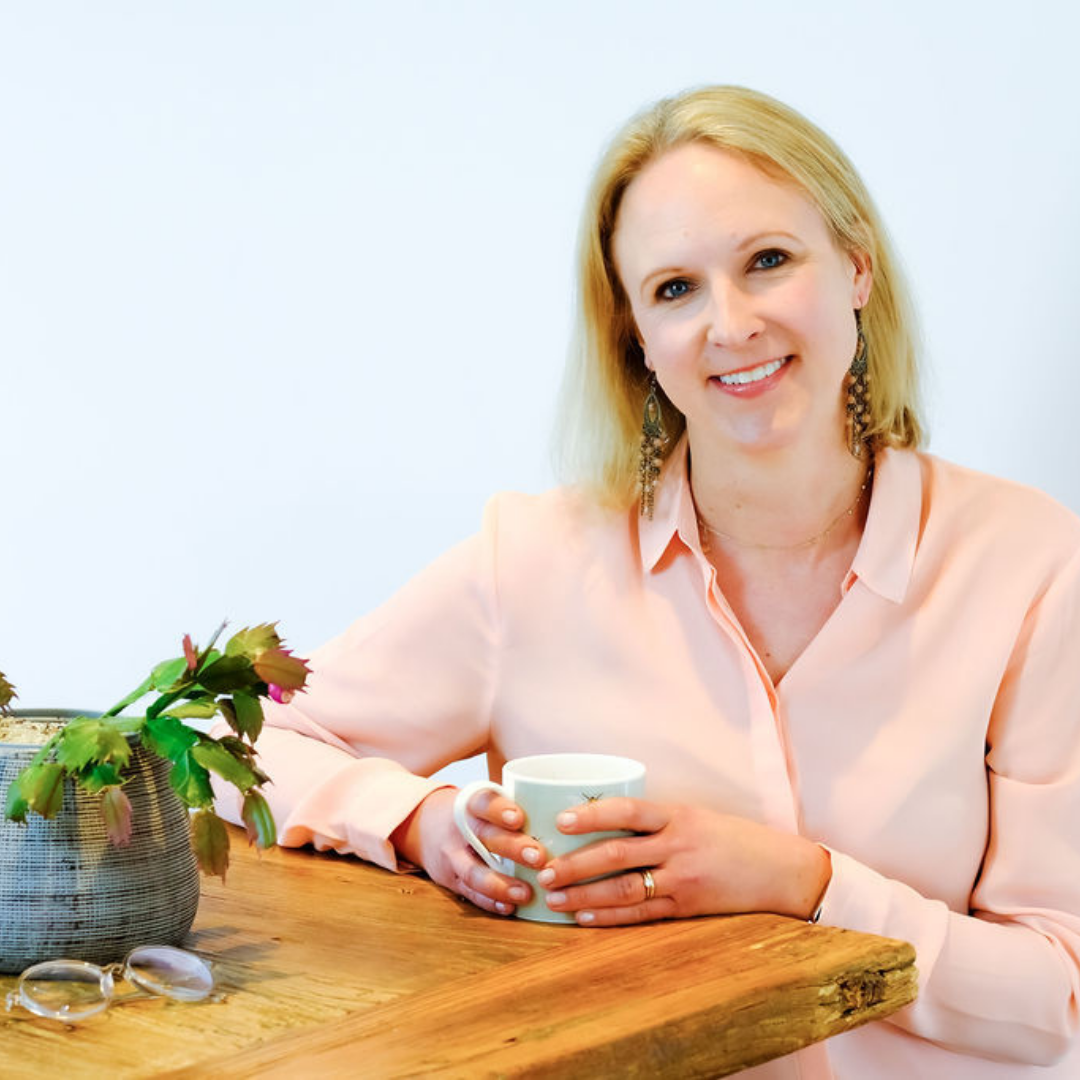4 Tips for a Successful Major Donor Event.

Working to plan a major donor event can take LOT’s of time, effort, resource and energy. So read on to get 4 approaches to help you make the most of your major donor events.

I worked with a Director and a CEO a few years ago who were incredibly excited because they’d been given the opportunity to have an event at Buckingham Palace, in the year of a big birthday for the charity.
Now whether you’re a Royalist or not, I do understand that Buckingham Palace can hold a certain appeal and I did not want to be negative in the face of their excitement. However, it was clear that this event was going to have to achieve a lot.
Through conversations with them I worked out that it would have to be:
- For front-line staff and the people they supported to experience the Palace
- A “press opportunity” to generate coverage
- A way of thanking community supporters
- Past trustees would need to be included
- And of course existing and potential major donors should be invited.
I asked: “What’s the aim of the event?”
No one knew beyond “to celebrate the charity’s birthday”, a rather vague answer, and I spent a long time internally trying to pin this down.
❔ What did they want to achieve by having the event?
❔ How would success be viewed?
At a time when you may feel busier than ever, being strategic about major donor events is vital.
Asking yourself what you’re trying to get from a major donor event is key because it influences pretty much everything about it: The location, the venue and format, the number of people you invite and who you invite, whether you’re raising money on the night or having a softer ask.
Are you trying to have that first Curiosity Conversation with a small number of lapsed high-net-worth supporters? A drinks reception with 200 people makes this much harder – you’d be lucky, even with name badges, to find these key donors, never mind discover more about them to engage them further.
However, a sit down dinner with a small number of philanthropists and specialist from your charity means you have the time and space to be truly curious and find out about that person, and then about the charity.

When I started a role heading up a major gift fundraising team, it became clear to me that they were spending a lot of time on events, leaving little time and effort to individually reach out to donors and potential donors. Meeting a fundraiser in the team I said it seemed like this to me, but what did they think?
It feels like we’re on an events bandwagon; as soon as we’ve finished one we’re on to planning the next and I’m not sure we make the most of them.
Have you ever had that?
It was music to my ears when one of the fundraisers who’d been on the Summit Major Donor Fundraising from Scratch programme, tactfully turned down an opportunity for an event at a prestigious gallery. The location, format, style and the challenge of filling the space with 200 people felt like a lot of work, but work that would take them away from what they needed to do for their major donor programme.
They did of course keep the option open with their contact for the future but saying no meant she could actually do more major donor fundraising:
- She focused on offering tours to the service in a tried and tested format that she knew engaged people!
- She spent time on arranging one to one meetings between the donor and the right person at the charity, including the CEO.
- And she spent time and effort picking up the phone. (If you find this tricky some tips here).
- She reengaged tens of major donors, and received some first time large gifts for the cause, all without an event.
Another organisation I worked with on their major donor strategy, was given an opportunity to host something at their Patron’s stately home. Many charities I know would have just said yes. I was so pleased that they thought about how it fitted with their priorities for major donor fundraising over the next 12 months, and responded with a polite “no, not now” but that they “would love to explore this generous opportunity in 12 month’s time.”
Part of being strategic with major donor events is sometimes holding less of them (or sometimes none).
It’s sometimes learning how to say no to some generous opportunities and, sometimes it’s going back to the basics of what you really want to achieve that year.

Major donor events are a huge amount of work!
Which I’m sure you know, so why am I mentioning this?
One thing I often see is loads of preparation and planning going into an event but this happens without any input from the people that the charity desperately want to be there! It all happens behind the scenes, often at a fast pace in a rush to get those invites out.
But…
❔ What if you’re planning for your next major donor event to be virtual, and actually your major donor connections are keen to get back together and meet others in person?
❔ What if you’ve assumed that your event will be in the evening, but actually those you’re inviting would find an early event with breakfast way easier to attend?
So if you’re planning a major donor event, and you don’t do this already, trying calling a number of people you’re going to invite and ask what they think. They might have some useful feedback, or if they love the idea just as it is, you’ll already have some attendees before you’ve even sent out the invites.

I mention above about asking donors their thoughts in the run up to an event, while you’re planning it. But what should the focus be after your event?
But what does great follow up mean in practice?
For me and the hundreds of organisation’s I’ve worked with, it means getting a tailored communication to your guests, that speaks to them and only them, and that suggests a relevant next step within 24 hours.
Why?
- When your guests leave your event they are likely be inspired, moved, and on a high. Many will be brimming with a desire to help and do more. It’s so important that tailored thank yous, including firming up any next step, go out to them fast, before this goodwill starts to fade as they go back to everyday lives and pressures.
- A quick and tailored follow up builds trust as you’re seen as efficient and great relationship managers – a high-net-worth guest is far more likely to get involved again or to introduce someone to you because they realise their contact would get a similarly great experience.
- Because you can. I do still remember the mornings after running a evening major donor events – I’d be exhausted! And excited! And I’d realise there was a lot to do! Careful planning and scheduling though means you can follow up within 24 hours: block out the whole day, deprioritise other meetings, and work out in advance when you can get feedback from staff and trustees on their donor conversations. I did this with a charity Chair, trotting alongside them as they rushed to the tube after the event! I just knew I wouldn’t be able to speak to them the next morning because of their schedule and it was vital I could tailor the thank you the next day to those guests the Chair has spoken to.
So if you haven’t thought about your major donor events in this way before, try and focus on the follow-up after your event, as much as the event itself.
If you’re not sure where events fit into your major gifts fundraising book a chat below and we can discuss the best support.

Louise Morris is the Founder of Summit Fundraising. She is a major donor fundraising specialist and has worked with over 200 charities helping them raise large gifts.
